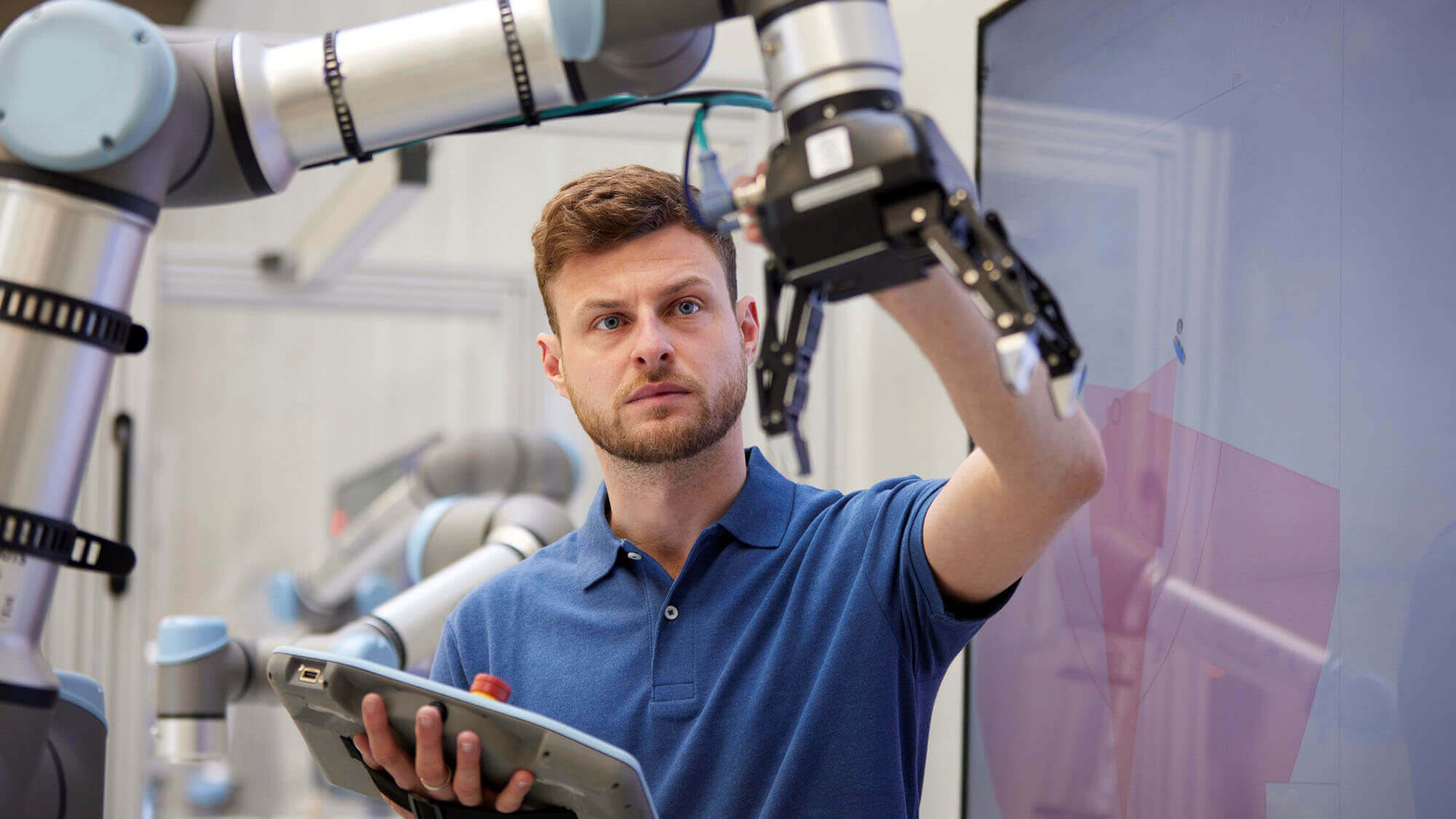Industry 5.0: A New Upgrade from Industry 4.0?

16 Sep 2025
The Human Renaissance that is Reshaping Automation
The factory floor is experiencing a profound transformation. After decades of pursuing maximum automation and efficiency, manufacturing is embracing a revolutionary paradigm that puts humans back at the center of production. Welcome to Industry 5.0, where robots step out from behind safety cages to become collaborative partners, fundamentally reshaping the automation industry.
Defining Industry 5.0: Beyond Pure Automation
Industry 5.0 represents a fundamental shift in manufacturing philosophy. While Industry 4.0 focused on extensive digitalization and automation, Industry 5.0 seeks to integrate innovative technologies with human actors in a more value-driven approach than its technology-centric predecessor. The paradigm rests on three core pillars: human-centricity, sustainability, and resilience.
This isn't simply about adding humans back into automated processes – it's about recognizing that the combination of human creativity, adaptability, and intuition with robotic precision and consistency creates capabilities neither could achieve alone. Industry 5.0 acknowledges that while machines excel at repetitive tasks and data processing, humans bring irreplaceable qualities: problem-solving creativity, emotional intelligence, and the ability to adapt to unexpected situations.
The shift represents a maturation of manufacturing thinking. After pursuing the limits of automation, industry leaders recognize that the most effective production systems blend human ingenuity with technological capability rather than replacing one with the other.
The Evolution of Automation: From Isolation to Integration
The automation industry's journey reflects broader manufacturing evolution. Traditional industrial robots operated in isolation, separated from human workers by safety barriers and programmed for specific, repetitive tasks. These systems delivered impressive productivity gains but lacked flexibility and required complete reconfiguration for new tasks.
Industry 4.0 introduced connectivity and intelligence, enabling robots to communicate with other systems and make basic decisions based on data. However, these advances still maintained the fundamental separation between human and machine workspaces. Robots remained tools – sophisticated ones, but tools nonetheless.
Industry 5.0 breaks down these barriers entirely. The new paradigm recognizes that many manufacturing challenges require the unique combination of human judgment and robotic capability. Complex assembly tasks, quality inspection requiring nuanced decision-making, and processes demanding real-time adaptation benefit enormously from human-robot collaboration.
The Rise of Collaborative Automation
This philosophical shift has driven remarkable innovations in automation hardware and software. Collaborative robots, or cobots, represent the most visible manifestation of Industry 5.0 principles. These systems are designed specifically for human-robot interaction within shared workspaces, featuring advanced safety sensors that prevent harm while enabling close cooperation.
Modern cobots can copy human movements, learn from demonstration, and adapt their behavior based on human feedback. They're not replacing human workers but augmenting human capabilities. A human operator might guide a cobot through a complex assembly sequence, with the robot learning the precise movements and then executing them with perfect repeatability while the human focuses on quality verification and problem-solving.
Articulated arms have evolved from rigid, pre-programmed tools to responsive partners. Today's collaborative robotic arms can sense force and torque, enabling them to work alongside humans on tasks requiring both precision and adaptability. They can hold components steady while humans perform intricate work, or execute precise movements guided by human oversight.
Autonomous Guided Vehicles (AGVs) have similarly transformed from simple material transport systems to intelligent collaborators. Modern AGVs integrate with human workflows, adapting their routes and timing based on human activity patterns. They can respond to gestures, voice commands, and even predict human needs based on production schedules and behavior patterns.
Breaking Free from the Cage
The physical transformation of manufacturing spaces tells the story of Industry 5.0's impact. Safety cages, once ubiquitous symbols of industrial automation, are disappearing from many production environments. This change represents more than improved safety technology; it symbolizes a fundamental reimagining of human-machine relationships.
Collaborative safety systems now use vision systems, proximity sensors, and AI-powered behavior prediction to ensure worker safety without physical barriers. Robots can operate at full speed when working independently but automatically adjust their speed and force when humans enter their workspace. This dynamic safety approach enables true collaboration while maintaining rigorous safety standards.
The elimination of physical barriers has psychological impacts as well. Workers no longer view robots as separate, potentially threatening systems but as collaborative partners. This shift improves acceptance and enables more effective human-robot teaming.
Implications for Automation Manufacturers
For companies developing robots, AGVs, and articulated arms, Industry 5.0 demands fundamental design philosophy changes. Safety systems must be inherently collaborative rather than restrictively protective. User interfaces need to enable intuitive human-robot communication. Programming paradigms must support learning from human demonstration rather than requiring expert coding.
The market is shifting toward modular, adaptable systems that can be easily reconfigured for different collaborative tasks. Automation manufacturers are investing heavily in AI capabilities that enable robots to understand human intent, predict human actions, and adapt their behavior accordingly.
This evolution also requires new business models. Rather than selling individual pieces of equipment, successful automation companies are providing integrated solutions that consider the entire human-robot workflow. Service and support models must address the complexities of collaborative systems and the need for ongoing optimization as human workers adapt to new collaborative partners.
The Road Ahead
Industry 5.0 represents more than technological advancement, it's a recognition that the future of manufacturing lies not in choosing between human workers and robotic systems, but in creating synergistic partnerships that leverage the unique strengths of both.
For the automation industry, this paradigm shift opens enormous opportunities. Companies that successfully develop truly collaborative systems – robots that enhance rather than replace human capabilities – will lead the next wave of manufacturing innovation.
The cage doors have opened, and there's no going back. The future of automation is collaborative, intelligent, and fundamentally human-centered. Industry 5.0 isn't just the next phase of industrial evolution, it's the beginning of a new era where humans and machines work together as partners in creating a more productive, sustainable, and humane manufacturing future.
